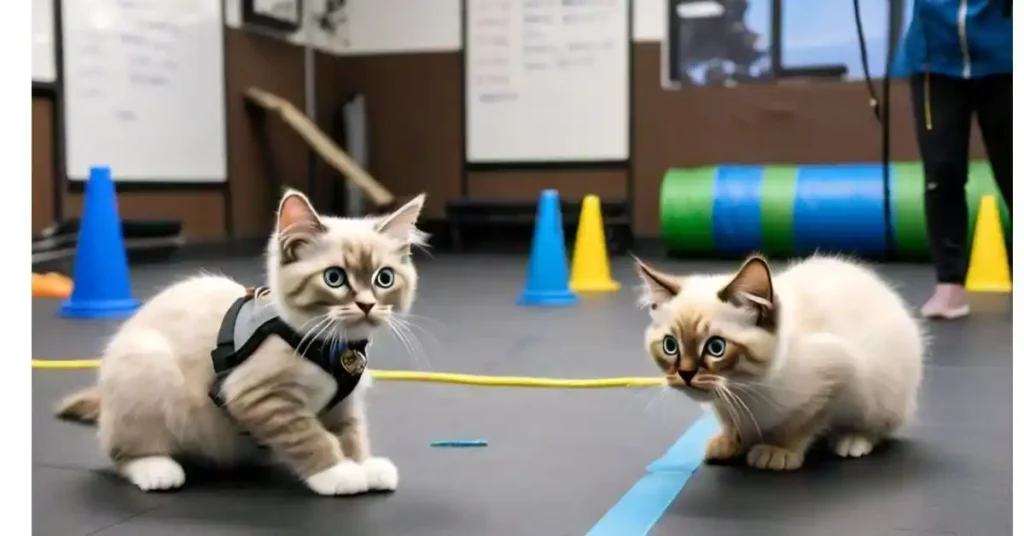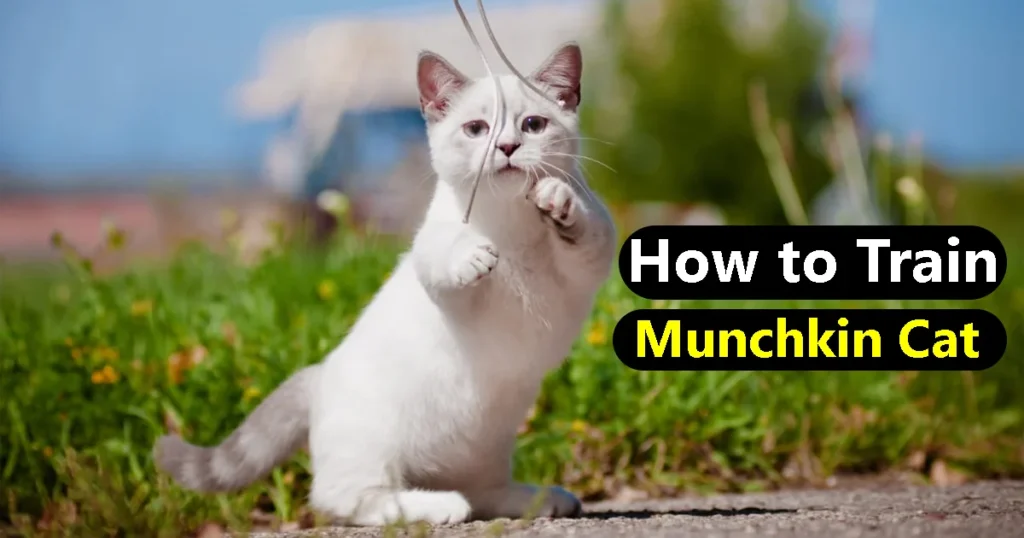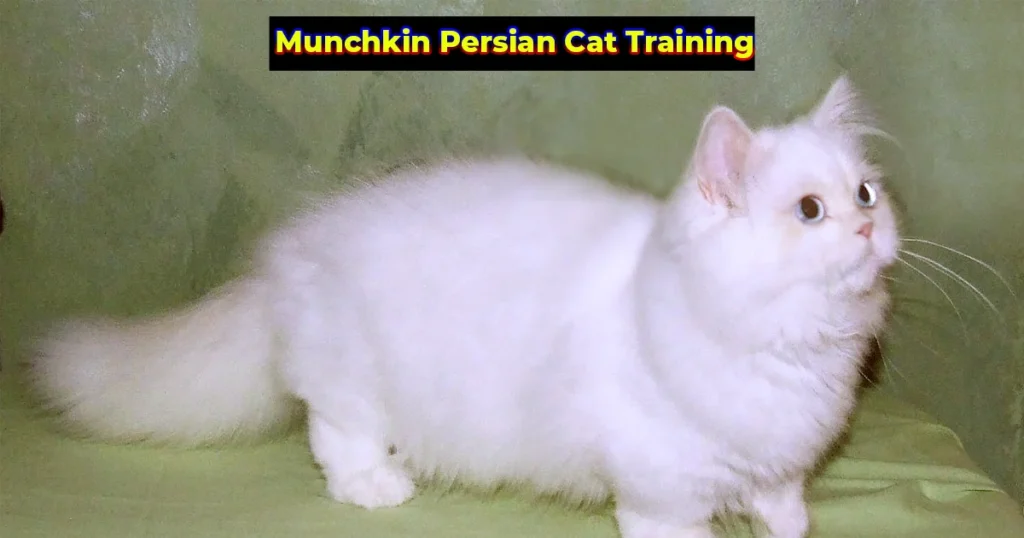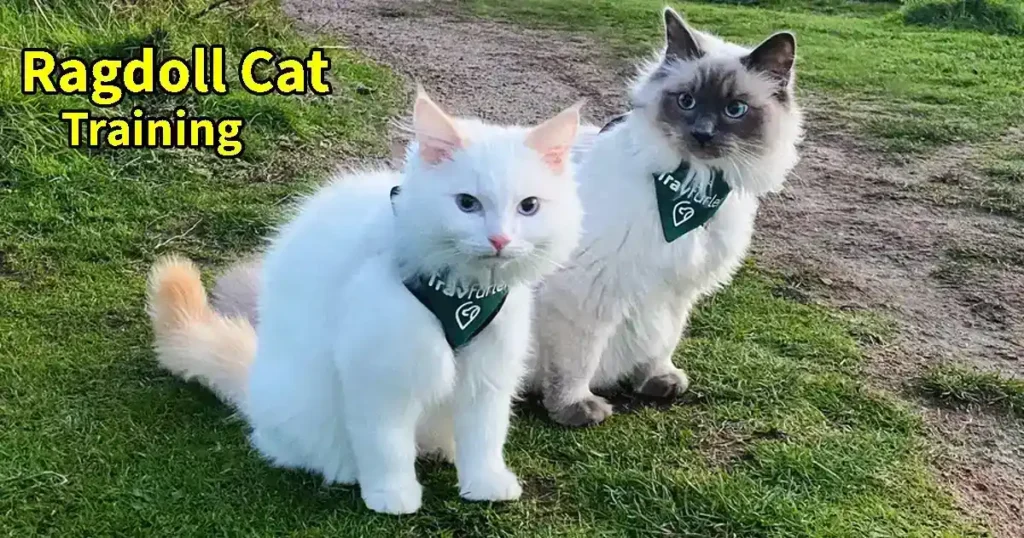Training a Munchkin Persian cat involves understanding the unique traits of both breeds and adapting your training approach to meet their specific needs. Munchkin cats are known for their short legs and playful nature, while Persian cats are recognized for their long, luxurious coats and calm demeanor. Combining these traits, the Munchkin Persian cat can be a delightful, albeit sometimes challenging, companion.
Training a Munchkin cat and a Munchkin Persian cat requires an understanding of each breed’s unique characteristics and needs. Munchkin cats are known for their distinctive short legs and playful nature, while Persian cats are recognized for their long, luxurious coats and calm demeanor. Combining these traits in training can be both challenging and rewarding.
This guide offers strategies for effectively training both Munchkin and Persian cats, focusing on their specific needs and providing tips for success. With patience, consistency, and positive reinforcement, you can effectively train your Munchkin Persian cat. Early socialization, daily play, and dental care are also crucial for their development and well-being.
Training Steps for Munchkin-Persian Cats
Training Munchkin-Persian cats, a mix of the playful Munchkin and the gentle, calm Persian, requires patience, consistency, and understanding their unique personalities. Here’s a step-by-step guide to help you train your Munchkin-Persian cat effectively:
1. Start Early
Begin training your kitten as soon as you bring them home. Early training helps establish good habits and makes it easier for them to adapt to your household. Socializing them with different environments, sounds, and people early on will also help them become well-adjusted.
2. Create a Safe and Stimulating Environment
Before you start training, make sure your home is kitten-proofed and full of stimulating activities. Provide interactive toys, scratching posts, and climbing areas for your Munchkin-Persian to engage their natural instincts.
3. Litter Box Training
Munchkin-Persian cats are generally easy to litter train due to their natural instinct. Place the litter box in a quiet, accessible location, and use positive reinforcement when they use it correctly. Keep the box clean and try different types of litter to find what your kitten prefers.
4. Use Positive Reinforcement
Always reward good behavior with treats, praise, or playtime. Positive reinforcement encourages your kitten to repeat desired behaviors. This is particularly effective with Munchkin-Persian cats, who are responsive to affection and gentle praise.
5. Teach Basic Commands
Start with simple commands like “sit,” “stay,” or “come.” Use treats to encourage your kitten to associate the command with a reward. Keep sessions short (5-10 minutes) to prevent them from losing interest, and practice commands daily.
6. Socialize Your Kitten
Introduce your Munchkin-Persian kitten to various people, pets, and environments early on. This helps them become comfortable and confident in new situations. These cats are affectionate and enjoy being around their human family members, so ensure they are exposed to positive interactions from the start.
7. Redirect Unwanted Behaviors
If your kitten scratches furniture or jumps on surfaces you don’t want them to, redirect them to appropriate areas, like scratching posts or a designated bed. Gently guide them away from undesired behavior and reward them when they do the right thing.
8. Leash and Harness Training
Although Munchkin-Persian cats are generally not as active as other breeds, they may still enjoy exploring outdoors. Introduce them to a harness and leash slowly, associating it with treats and play. Be patient, as it may take time for them to feel comfortable wearing the harness.
9. Be Patient and Consistent
Training takes time, and every cat learns at their own pace. Be patient with your Munchkin-Persian kitten and avoid using harsh methods. Consistency is key—use the same commands and rewards every time to help your kitten understand what’s expected of them.
10. Create a Routine
Establish a consistent routine for feeding, playtime, and training. Cats thrive on routine, and it will help your Munchkin-Persian feel secure and understand what’s expected during training sessions.
By following these training steps with love and patience, your Munchkin-Persian cat will grow into a well-behaved, affectionate companion that enjoys spending time with you and exploring its environment.
Provide Mental and Physical Stimulation
While Munchkin-Persians may not be as active as some other breeds, they still need mental and physical stimulation. Use interactive toys or puzzle feeders to engage their minds and encourage activity. Playtime also strengthens the bond between you and your cat.
Patience and consistency are key when training a Munchkin-Persian. They respond well to gentle, positive methods and may take some time to master certain skills. Avoid punishment, as it can cause stress and hinder learning. Instead, focus on building trust and confidence.
By following these steps and maintaining a calm, positive training approach, you can help your Munchkin-Persian cat learn new skills and behaviors, strengthening your bond and ensuring a well-behaved, happy companion.
Leash Training for Munchkin-Persians
Leash training for Munchkin-Persian cats can be an enjoyable experience if done gradually and with patience, as these cats are known for their affectionate and calm nature. Here’s a step-by-step guide to help you train your Munchkin-Persian cat to walk on a leash:
1. Choose the Right Harness
Begin by selecting a comfortable, adjustable harness designed specifically for cats. It should be snug but not too tight, allowing for comfortable movement. A soft, lightweight harness works best for Munchkin-Persians due to their shorter stature and long, thick fur.
2. Introduce the Harness
Start by letting your cat sniff and explore the harness before putting it on. This helps them get used to the new object. Gradually slip the harness over their head and adjust it to ensure a proper fit. Leave it on for a few minutes each day, offering praise or treats for tolerance.
3. Short Indoor Sessions
Once your cat is comfortable with the harness, attach the leash and let them walk around indoors. Keep the leash loose to avoid restricting their movement. Let them explore while gently guiding them if necessary. Keep these sessions short, around 5-10 minutes, and always end on a positive note.
4. Positive Reinforcement
Reward your Munchkin-Persian with treats, praise, or petting whenever they walk or engage positively with the harness and leash. This will help them associate the experience with something enjoyable.
5. Slowly Introduce Outdoor Environments
Once your cat is comfortable walking indoors with the harness and leash, you can move to a quiet outdoor space, such as a backyard or enclosed area. Allow your cat to explore at their own pace, offering encouragement and rewards for good behavior.
6. Patience and Consistency
Munchkin-Persians, like all cats, may need time to get used to leash walking. Be patient, and keep training sessions short and enjoyable. Avoid forcing them to walk or explore outside if they seem frightened or unwilling.
7. Avoid Tugging
Never tug or pull on the leash, as this can cause distress. Instead, use gentle guidance to encourage them to move forward or change direction.
Build Confidence Gradually
Over time, as your cat becomes more confident in their harness, you can extend outdoor walks and explore new environments. Always be mindful of your Munchkin-Persian’s comfort level and adjust training accordingly.
Leash training can be a fun bonding experience with your Munchkin-Persian, allowing them to safely explore the outdoors while also providing them with much-needed mental and physical stimulation. With patience and positive reinforcement, your cat will soon enjoy their walks by your side.
| Feature | Munchkin Cat | Persian Cat |
|---|---|---|
| Physical Characteristics | Short legs | Long fur, flat face, large eyes |
| Temperament | Friendly, outgoing, sociable | Gentle |
| Health Considerations | Potential for spinal issues | Breathing difficulties, eye problems |
| Care | Minimal grooming, regular vet checkups | Daily grooming, regular eye and nose cleaning |
| Training | Essential to prevent behavioral problems and strengthen bond | Essential to prevent behavioral problems and strengthen bond |
Why Training is Essential
Training is essential for Munchkin and Persian cats for several reasons. Firstly, it helps prevent behavioral problems, such as scratching furniture or inappropriate elimination. Additionally, training strengthens the bond between you and your cat, fostering mutual trust and respect.
By investing time and effort into training, you’ll enhance your cat’s quality of life and enrich your relationship with them.
Special Considerations for Munchkin-Persian Cats
Munchkin-Persian cats have unique traits that require special care and attention, blending the characteristics of both the Munchkin and Persian breeds. Here are some important considerations for their care:
1. Health and Physical Limitations
Munchkin-Persians inherit the Munchkin’s short legs, which can sometimes affect their mobility, though it generally doesn’t impede their ability to move around. However, this physical trait means they may be more prone to joint or back issues over time. Regular veterinary checkups are essential to monitor their health and ensure they’re comfortable.
2. Grooming Needs
Persian cats are known for their long, thick fur, which requires regular grooming to prevent matting and tangling. Munchkin-Persians typically inherit this long coat, so daily brushing is recommended to keep their fur in good condition. This grooming routine also helps reduce shedding and hairballs, common concerns for long-haired breeds.
3. Managing Their Weight
Munchkin-Persians, like all cats, need a balanced diet to maintain a healthy weight. Their shorter legs may make them less active than some other cats, so it’s important to monitor their food intake and ensure they get adequate exercise. Overweight cats may face additional joint stress, so portion control and regular playtime are key.
4. Exercise and Stimulation
While their short legs might limit the length of their jumps or runs, Munchkin-Persians are still playful and enjoy interactive toys. They may prefer activities that don’t require a lot of running but still enjoy puzzle toys, gentle climbing, and low-impact play. Keeping them mentally and physically stimulated is important for their well-being.
Temperament and Socialization
Munchkin-Persians are typically gentle, affectionate, and social cats. They enjoy being around their owners and are usually good with children and other pets. Early socialization is important to ensure they develop into confident and friendly companions. They may also enjoy lounging near you or sitting on your lap due to their loving, laid-back nature.
By understanding and addressing these unique considerations, you can provide your Munchkin-Persian cat with the best care possible, ensuring they stay healthy, happy, and comfortable throughout their life.
| Tip | Description |
|---|---|
| Start Early | Begin training your cat as a kitten to establish good habits and make training easier. |
| Short Sessions | Keep training sessions short and frequent (5-10 minutes) to match your cat’s attention span. |
| Patience | Be patient and consistent with training. Cats learn slower than dogs, so avoid punishment-based methods. |
| Socialization | Socialize your Munchkin or Persian early with people, other pets, and different environments. |
| Litter Box Training | Ensure your cat knows where the litter box is and keep it clean to avoid accidents. |
| Scratching Behavior | Provide scratching posts and redirect scratching to appropriate surfaces. |
| Grooming | Start grooming your cat from a young age, especially Persians, to get them accustomed to brushing, nail trims, etc. |
| Obedience Commands | Teach basic commands like “sit,” “stay,” and “come” using positive reinforcement techniques. |
| Environmental Enrichment | Provide toys, puzzle feeders, and climbing opportunities to keep your cat mentally stimulated and prevent boredom. |

Basic Training Techniques
Positive reinforcement is the cornerstone of effective cat training. By rewarding desired behaviors with treats or praise, you encourage your cat to repeat those behaviors in the future. Clicker training is another valuable tool, allowing for precise communication and quick learning. Socialization is also crucial, especially for kittens, as it helps them feel comfortable in various environments and around different people and animals.
Behavioral Training
Behavioral training focuses on modifying undesirable behaviors and encouraging desirable ones. If your cat exhibits unwanted behaviors such as scratching furniture or excessive meowing, redirect their attention to more appropriate activities.
Use positive reinforcement to reward good behavior and discourage bad behavior without resorting to punishment, which can damage your relationship with your cat.

Patience and Consistency
Training a cat requires patience and consistency. Remember that cats learn at their own pace, and it may take time for them to master new skills. Stay calm and positive, even in the face of setbacks or challenges. Consistency is key; stick to your training routines and methods to reinforce desired behaviors effectively.
Training Tips for Specific Behaviors
Addressing specific behavioral issues requires tailored approaches. To prevent scratching furniture, provide suitable scratching posts and redirect your cat’s attention whenever they attempt to scratch elsewhere.
For aggression towards other pets, gradually introduce your cat to new animals in a controlled environment using positive reinforcement to encourage peaceful interactions. If your cat meows excessively, identify the underlying cause, such as hunger or boredom, and address it accordingly.
Training Challenges and Solutions
Every cat is unique, and some may present challenges during training. If your cat is particularly stubborn or fearful, approach training with patience and understanding. Break down tasks into smaller more manageable steps, and reward your cat for progress no matter how small.
Seek guidance from a professional trainer or behaviorist if you encounter difficulties that you’re unable to overcome on your own.
Enrichment Activities
In addition to formal training sessions, engage your cat in enriching activities to stimulate their minds and satisfy their natural instincts. Create DIY enrichment toys or puzzles that challenge your cat’s problem-solving abilities and provide opportunities for physical exercise. Rotate toys regularly to keep your cat entertained and prevent boredom.
FAQs
What age should I start training my Munchkin cat or Persian?
It’s best to start training your cat as early as possible, ideally when they are kittens, as they are more receptive to learning at a young age.
Can Munchkin cats and Persians learn tricks like dogs?
Absolutely! With patience and consistency, Munchkin cats and Persians can learn a variety of tricks and commands using positive reinforcement techniques.
How long should training sessions be?
Training sessions should be kept short, typically no longer than 10-15 minutes, to maintain your cat’s focus and prevent boredom.
What should I do if my cat isn’t responding to training?
If your cat isn’t responding to training, reassess your approach and consider seeking advice from a professional trainer or behaviorist who can offer personalized guidance.
Is it possible to train older cats?
Yes, it’s possible to train older cats, although it may require more patience and persistence. Start with basic obedience and gradually introduce more advanced training techniques.


